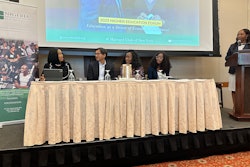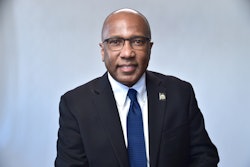Survey: CEOs Fear International
Competition for STEM Talent
Industry fails to see potential in under-represented minorities
By Ibram Rogers
PITTSBURGH, Pa.
Chief executive officers of the country’s 100 fastest-growing science and technology companies fear international companies will gain a competitive advantage if they have access to the United States’ best scientists and technical workers, according to a survey released recently.
And yet, the predicted drain on highly skilled workers has not prompted the CEOs to recruit, hire or nurture minorities and women, who remain under-represented in the STEM (science, technology, engineering and math) fields.
According to the study, commissioned by Bayer Corp., 74 percent of CEOs are “not frustrated” by their company’s inability to hire Blacks, Hispanics, American Indians and women. Although 83 percent say STEM companies have a role in ensuring that minorities and women succeed in science and engineering, only one in five have specific recruitment programs targeted at minorities and women.
The pool of women and under-represented minorities in the STEM industry is not being adequately tapped because of a preconceived image of what scientists, mathematicians and engineers should look like, says Dr. Mae Jemison, the nation’s first Black female astronaut and CEO of BioSentient Inc., an emerging medical devices company.
That image: A White male.
“A good proportion [of CEOs] have not yet fully made the connection between the potential STEM manpower shortage issue and the potential, untapped talent pool that exists in those individuals who are still not well represented in these fields,” Jemison says. “They don’t visualize [minorities and women], who make up more than 50 percent of the population, as their potential work force.”
The White male scientist image has also manifested itself negatively among college faculty, Jemison adds, leading to poor treatment and higher drop-out rates for women and under-represented minorities in STEM programs.
“The professors don’t really see women or people of color as their future colleagues,” says Jemison, who has been a professor at Dartmouth College and Cornell University.
Studies indicate women make up 25 percent of the STEM work force, and people of color represent an even smaller percentage. Sixty-five percent of the executives surveyed agreed that minority groups were indeed under-represented in their companies.
Despite the dearth of minorities and women, two-thirds of the CEOs surveyed said that neither their companies nor their employees participate in pre-college education programs designed to increase minority students’ interest in math and science.
The study, titled “Bayer Facts of Science Education XII: CEOs on STEM Diversity: The Need, The Seed, The Feed” surveyed senior executives of the 100 fastest-growing U.S. science and technology companies. Bayer Corp., headquartered in Pittsburgh, Pa., is part of Bayer Group, an international health care, nutrition and innovative materials group based in Germany.
The survey, conducted by International Communications Research, also showed that 53 percent of the CEOs say their companies do not effectively communicate the message to women and African-American, Hispanic and American Indian students that there are significant opportunities for them in the STEM fields.
“What we’re seeing here is a tremendous opportunity on the part of STEM companies to get involved in a variety of ways with today’s students and their STEM education,” says Bayer Corp. President and CEO Dr. Attila Molnar. “Whether it’s initiating outreach with them and beginning a dialogue about the need for them in these fields, providing role models and mentors, or actively supporting education programs that have a track record of success with girls and minorities — the opportunity is certainly there.”
© Copyright 2005 by DiverseEducation.com





















